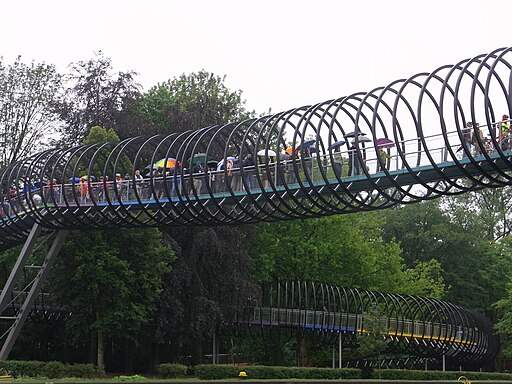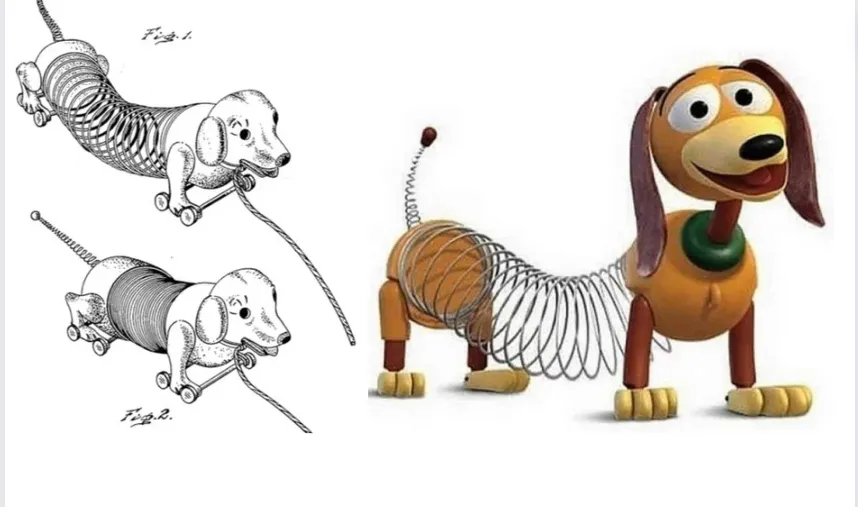Everyone Knows Its Slinky
Everyone’s favorite toy was accidentally invented by a WWII Navy engineer and 80 years later it’s still slinking around.
In 1943, Richard James was working on a project involving springs when he knocked one off a shelf. To his surprise, the spring didn't just fall to the ground but instead ‘walked’ down in a series of graceful arcs and coils.
Intrigued, Richard tinkered with different types of steel and tension. His wife Betty conjured up the name and they sold 400 Slinky toys in 90 minutes when Gimbels gave them a counter to demonstrate their invention in Philadelphia.

Slinky's storied history
James borrowed $500 to begin production and designed a machine to coil 80 feet of wire into a two-inch spiral. By the end of the 1945 holidays, customers had bought almost 20,000 Slinky toys and its popularity spread to 10m within 10 years. James was getting bored though and in 1960, he left his family and flew to Bolivia to join an evangelical cult.

“These religious people always had their hands out. He had given so much away that I was almost bankrupt,” Betty James said in 1996. She had six children and took the reins of the business. The company was soon bouncing along again, more popular than ever.
During the Vietnam War, US soldiers used them as mobile radio antennas, and amateur radio operators have utilized them ever since. Slinky toys have also been used in light fixtures, for keeping leaves and debris out of rain gutters, in pecan picking machines, and for keeping squirrels out of bird feeders.
Nasa brought the Slinky into space in 1985 aboard the Discovery Space Shuttle to demonstrate zero gravity, where it would droop rather than slink. Slinky even had its own postage stamp by 1999. Another milestone came in 2014 when The One Show in Cambridge, UK, set a World Record for consecutive Slinky steps: 30.
Susan Suazo, of Los Lunas, New Mexico was certified for another reason. In 2015, Guinness World Records named her collection of 1,054 Slinkys the largest in the world.
"The brand new social experience where you activate your gaming skills as you train like a spy."
- TimeOut
Take on thrilling, high-energy espionage challenges across different game zones.


Toy Hall of Fame
At the end of the 20th century, Slinky Dog was patented by Helen Malsed, a northwestern lumber baron’s daughter who also invented Slinky Train.
Meanwhile, Betty was inducted into the Toy Industry Hall of Fame in 2001, one of the rare women to be praised for her “leadership, foresight and business acumen”. On the toy's 70th anniversary in 2013, an estimated 300m Slinky toys had been sold worldwide.

Everyone knows its Slinky
The ‘60s advertising jingle was genius: What walks down stairs alone or in pairs and makes a slinkety sound? A spring a spring, a marvelous thing. Everyone knows it’s Slinky!
“The reason everyone knows the jingle,” James’ son told the Philadelphia Inquirer, “is that we were too broke to buy a new one. We burned it into the mentality of the country.”
SPYSCAPE+

Join now to get True Spies episodes early and ad-free every week, plus subscriber-only Debriefs and Q&As to bring you closer to your favorite spies and stories from the show. You’ll also get our exclusive series The Razumov Files and The Great James Bond Car Robbery!


Gadgets & Gifts
Explore a world of secrets together. Navigate through interactive exhibits and missions to discover your spy roles.
Your Spy Skills
We all have valuable spy skills - your mission is to discover yours. See if you have what it takes to be a secret agent, with our authentic spy skills evaluation* developed by a former Head of Training at British Intelligence. It's FREE so share & compare with friends now!
* Find more information about the scientific methods behind the evaluation here.


Stay Connected
Follow us for the latest
TIKTOK
INSTAGRAM
X
FACEBOOK
YOUTUBE